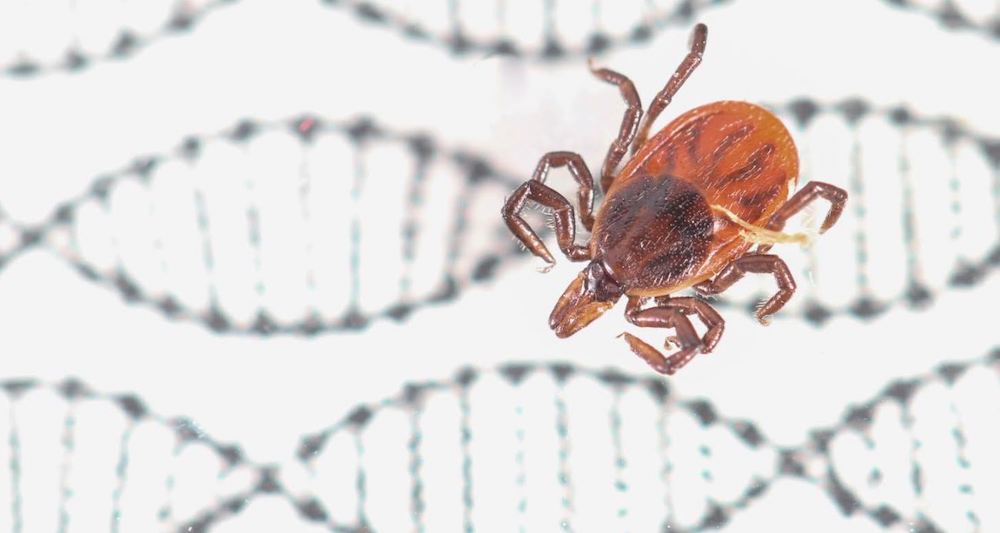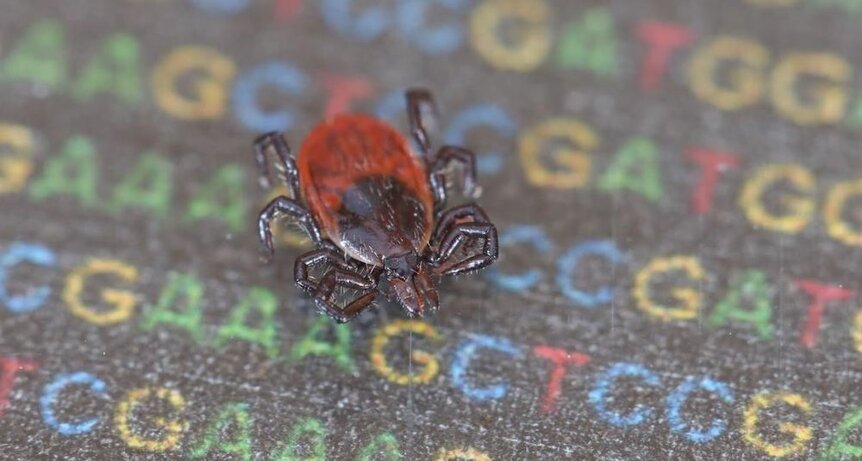Create a free profile to get unlimited access to exclusive videos, sweepstakes, and more!
Hold the Lyme - these genetically modified ticks could reduce human disease
When life gives you Lyme, make genetically modified bugs.

Arthropods are hard to love. They’re not particularly cute (most of the time), they have a propensity for biting, and they’re one of the primary modes of disease transmission among humans. In the United States, ticks are responsible for approximately 300,000 cases of Lyme disease every year, a disease which, if left untreated, can be fatal.
The problem of Lyme disease is worsened by the fact that we have no vaccine and treatments have variable results. Our best course of action in minimizing the negative impacts of Lyme disease and other tick-borne illnesses, is prevention. The CDC recommends using repellent chemicals which include 0.5 percent permethrin or other compounds known to keep ticks at bay, in addition to avoiding areas where ticks like to congregate.
However, scientists are looking for solutions which might prevent tick-borne disease transmission at the source, by genetically altering ticks before they hatch. Andrew B. Nuss and Monika Gulia-Nuss, both scientists from the Department of Biochemistry and Molecular Biology at the University of Nevada Reno, along with colleagues, developed a method for altering the genome of tick embryos. Their process could eventually lead to modified ticks incapable of transmitting Lyme or other diseases to humans. Their findings were published in the journal iScience.
“I see a lot of applications of this technology. Tick-borne diseases and vaccine development, that’s a really important aspect of this work. How do we even know which genes are involved in tick pathogen interactions? We need to find new gene targets which are unique to ticks,” Gulia-Nuss told SYFY WIRE.
While CRISPR-Cas9 gene editing systems have become a rather common tool within biology, using those technologies in ticks turned out to be uniquely difficult. Tick biology, particularly as it relates to reproduction, is such that getting the gene editing tools into the embryo wasn’t initially possible.
Ticks lay their eggs beneath the soil in the fall and they don’t hatch until the following spring. In order to protect their eggs, reproducing females coat their eggs in a waxy covering which prevents them from losing moisture and protects them from microorganisms. The waxy coating is thick and difficult to pierce, rendering the usual injection process unusable.
“Injecting tick embryos had been deemed impossible, that’s something we didn’t know before we started,” Gulia-Nuss said. “In order to puncture the egg, we had to remove that wax. People have used organic solvents and enzymes to break down the wax. We tried the same things. Everything works, but it kills the embryo as well.”
Scientists needed a method of removing the wax from the egg’s surface without destroying the embryo, something which was made possible through a better understanding of tick biology. Ticks use a gland near their mouthparts to coat the eggs in wax. The team surgically removed the gland, and later developed a method for draining the gland without removing it, resulting in uncoated eggs.
From there, CRISPR could be used as normal to target genes and modify them. First steps involved a proof of concept, illustrating that this process could result in modified ticks.
“We wanted to choose things which would induce a more obvious phenotypic change. Proboscipedia was one of those genes. If you knock that gene out in drosophila, they develop legs from their mouth parts,” Nuss said.
The team did see changes in morphology after their modifications but not to the degree they’d expected. Nuss explained this might suggest arthropods are using these genes in different ways and they may not be as important as previously supposed.
“Now the question is, which ones are? We’re just now cracking open that box,” Nuss said.
Gene editing ticks is in its very early stages, but the process for removing wax from embryos opens up a wealth of possibilities for beneficial transgenic ticks. The team is planning to create modified tick germlines with CRISPR Cas-9 preloaded, which could be shared with research teams all over the world. That way researchers could easily target genes and see what comes out the other end.
By understanding the tick genome more fully, we might be able to develop a vaccine for tick-borne diseases like Lyme or create modified ticks which are incapable of transmitting disease, for release into the population.
Gene editing holds the possibility of eliminating disease without needing to eliminate the species which carry them. Good for us. Good for ticks.



























